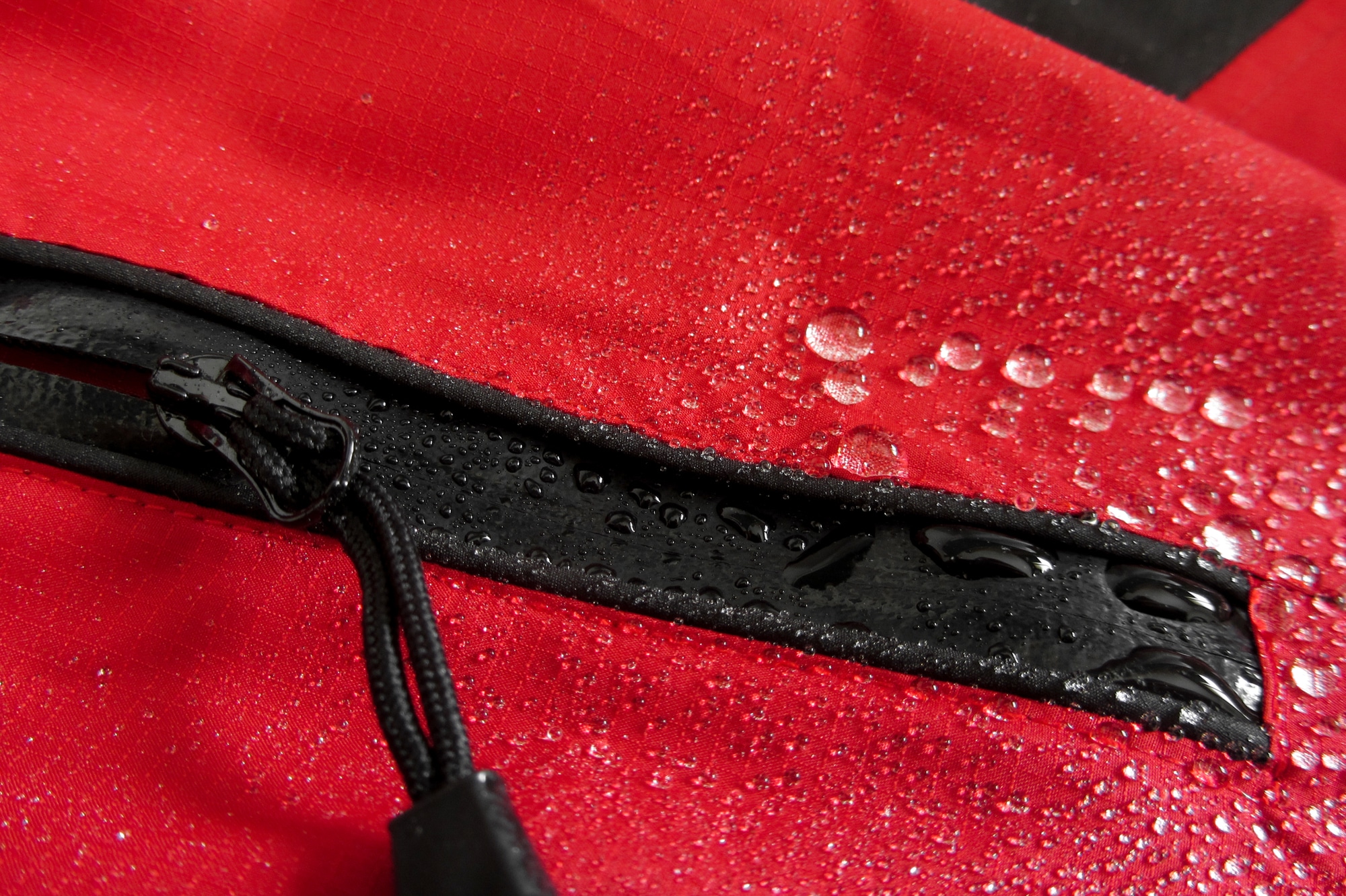Clothing made from fleece such as jackets, mufflers and scarves have become so common in stores across the country. Fleece is so soft that it is easy to assume that this fabric is a naturally occurring one. The truth, however, is that, fleece is a synthetic fabric which is created from polyester. Different strands of polyester are woven together to create the fabric and depending on the kind of texture required, hemp and rayon may be also be added.
Scientists have also found a way to create soft fleece from plastic that is usually thrown away, and that makes fleece a recycled fabric, in a way. In the winter months, it is not unusual to spot hikers wearing fleece jackets but are they the right investment to make for hiking trips is something we’ll be exploring in this article.
Table of Contents
Types of Fleece
Fleece, being a versatile fabric in different varieties:
Cotton or cotton-blended fleece
Cotton blended fleece is usually used to make fleece bathrobes, sweatshirts and athletic sweatpants since it has a smooth exterior. Although the fabric feels very comfortable against the skin, it does not keep one warm.
French terry fleece
This fabric is soft, smooth and thin which means that it sits against the skin and gives the wearer a good fit. For this reason, it is often used to make sweat shorts and fashion hoodies since they pair well when worn with a sweatshirt and slim jeans respectively.
Lycra spandex fleece
Spandex when added to any fabric makes it more stretchable and body hugging. Spandex is most often used in athletic wear and when added to fleece, adds one layer of warmth to the body. This does not mean that it can be worn during the winter.
Sherpa fleece
Sherpa fleece is made from polyester and has a soft texture. That’s the reason why it is often used to line clothes from the inside so as to make them warmer. Since this fleece is made from synthetic fibre, it dried fast and with regard to texture, it does feel like a real sheep coat.
Polyester fleece
This is the most commonly found and used type of fleece and it used to make a range of comfy wear including sweaters and jackets. This type of fleece is easily damaged when exposed to heat but repels moisture better. This type of fleece is also very good if you plan to wear layered clothes.
Polar fleece
The name itself brings to mind a polar bear and this type of fleece is available in varying thickness. It is not windproof but despite the thickness, it does dry quickly and is the best fleece to wear in extreme cold weather. Even if its is raining, you can be sure that you won’t feel a thing.
Microfleece
Another very commonly used material for athletic wear, microfleece is light and thin. It is also used as an inner lining for thick coats. In fact, if you plan to go on long trips, packing clothes made from microfleece is a good idea as the fabric is so thin that it doesn’t take up much space in luggage.
Bonded fleece
Bonded fleece clothes are best worn in climates when extra tough fleece is required to keep you warm. Just as the name suggests, bonded fleece is always used along with other types of fleece to add an extra layer of warmth.
Benefits of Wearing Fleece

Fleece looks good on everybody irrespective of age or gender and scores high on the cosiness and comfort factor. Plus, it is also so affordable and available in a range of colours. Here are more reasons why wearing fleece on a hike makes sense:
Softer Than Wool
Even in extreme cold climate, comfort is important and when you’re wearing fleece, you get the double benefit of clothing that keeps you warm and which stays soft on your skin. Wool tends to make the skin itch after long hours of wearing but you won’t have that problem with fleece at all. Plus, fleece is really low maintenance too.
Water-Resistance
Its water-resistant properties are something that you will admire if ever you get caught in surprise showers. Fleece will keep you warm even when wet and since it dries quickly, you don’t have to pack a lot of winter wear with you when planning a winter hike. Wool, on the other hand, absorbs water and becomes heavier.
Perfect For Layered Clothing
If you plan on wearing multiple layers of clothing on your hike, then wear fleece as the first layer. There are different types of fleece inner and thermal wear that’s available and since it traps heat wonderfully, you don’t have to worry about ever feeling the chills.
Cost-Effective
Fleece has been trending for some time now and it is so stylish too. Other winter wear like wool is definitely more expensive whereas fleece is very easy to maintain. You’ll also find it easy to repair tears and rips should they happen.
Light-Weight
Wool, is a heavy fabric whereas fleece is a light-weight fabric. Hikers know that it is important to carry minimal weight on a hike and wearing heavy winter wear will slow you down. In that regard, fleece, even if it weighs next to nothing does an amazing job of keeping one warm.
Easy To Maintain
Wool is a high maintenance fabric whereas fleece is much easier to clean and maintain. The best way to maintain it is by dry cleaning it or by lightly sponging off any visible dirt on the surface. The microfibers in the fabric do not absorb water and dry easily.
When Should You Wear Fleece
Fleece can be worn at any time of the day or night irrespective of the weather. It keeps you warm when you go jogging on a summer day and works just as well if you want to wear a thin jacket to keep out the cold at night. Fleece is a great option to consider for any activity in which you are likely to sweat a lot such as in hiking, running etc. Fleece is a much in-demand fabric for athletic wear too, which can help boost performance.
Frequently Asked Questions
1. Is Fleece Better Than Cotton?
Let’s take a look at how both these fabrics compare on 3 parameters:
Weather- Resistance
Fleece doesn’t absorb water and its low absorption quality makes it ideal for use as winter wear. Cotton, on the other hand, absorbs water easily and is not ideal winter wear fabric.
Insulation
Fleece is much better at trapping body heat thus keeping the wearer warm. Cotton, on the other hand, provides better air circulation and keeps the skin cool. In terms of winter wear fabric, fleece wins.
Comfort
There’s no doubt that cotton is definitely more comfortable on the skin than fleece. It has high durability and doesn’t trap body odor as well. Fleece which consists of a mesh of strong fibers is much more durable than cotton.
Cotton can be worn all year around but if you’re looking specifically for the right type of winter wear to keep you warm then fleece winter wear is the right fabric to choose.
2. Is Fleece Warmer Than Wool?
Fleece and wool are known for their fantastic heat retention qualities which is why they are the preferred fabrics of choice in winter wear. However, on contact with water, wool tends to become heavy and takes many hours to dry thoroughly. Fleece, on the other hand, may absorb water (assuming you’ve been caught in heavy showers) but also tends to dry faster. If you’re planning on wearing layered clothing on your hike, you may find that wearing fleece as the first layer is a better option than wool because it will not make your skin itch and is more comfortable.
3. What are the pros and cons of fleece and wool?
Pros Of Fleece:
- Lightweight fabric which will not drag you down during a hike.
- Dries quickly, even after it comes into contact with water.
- Does not absorb water.
- Very easy to maintain.
- Retains its shape without shrinking.
- Soft and comfortable on the skin.
Cons of Fleece:
- Can attract dust, pet hair, lint etc.
- Is not windproof.
- May melt if it is kept near an open fire.
Pros of Wool:
- Has semi water repellent properties.
- Is a naturally occurring fabric.
- Has anti-microbial properties which does not trap body odor.
- Has flame retardant properties.
Cons of Wool:
- Is high maintenance and cannot be washed by hand.
- Takes many hours to dry thoroughly.
- Can shrink in size if it has been washed incorrectly.
- May cause itching when worn for long.
- Is not as soft as fleece when worn directly on the skin.
4. Is Fleece Material Breathable?
Yes fleece is breathable and can still retain many of its insulating properties even when fully wet.

